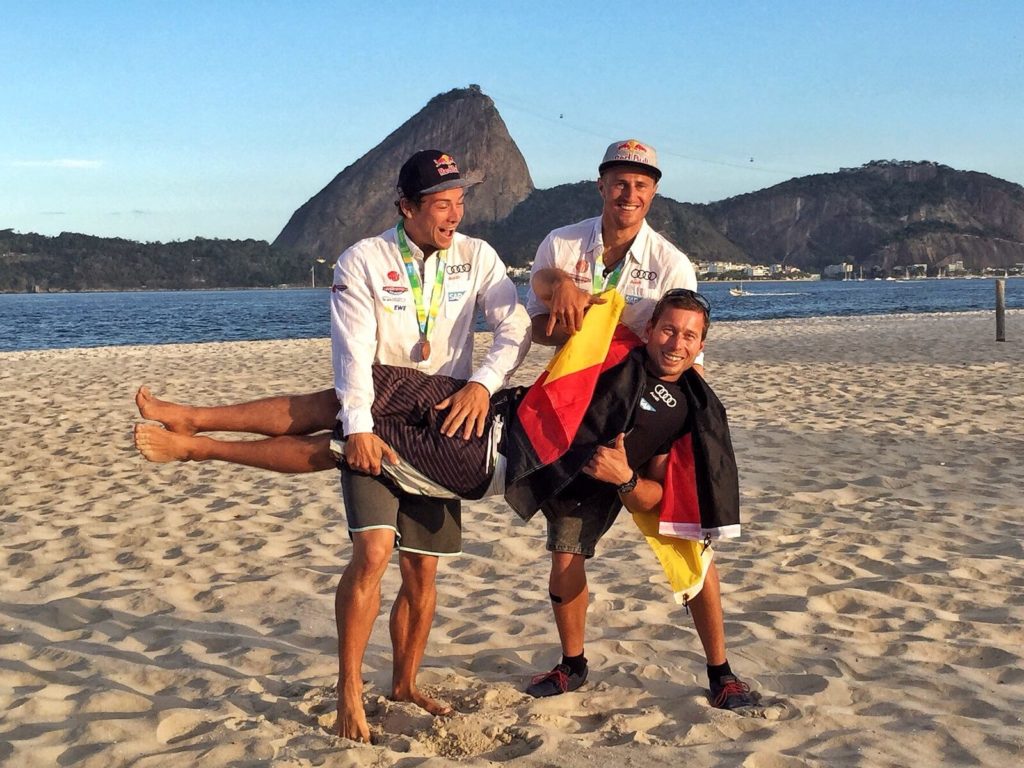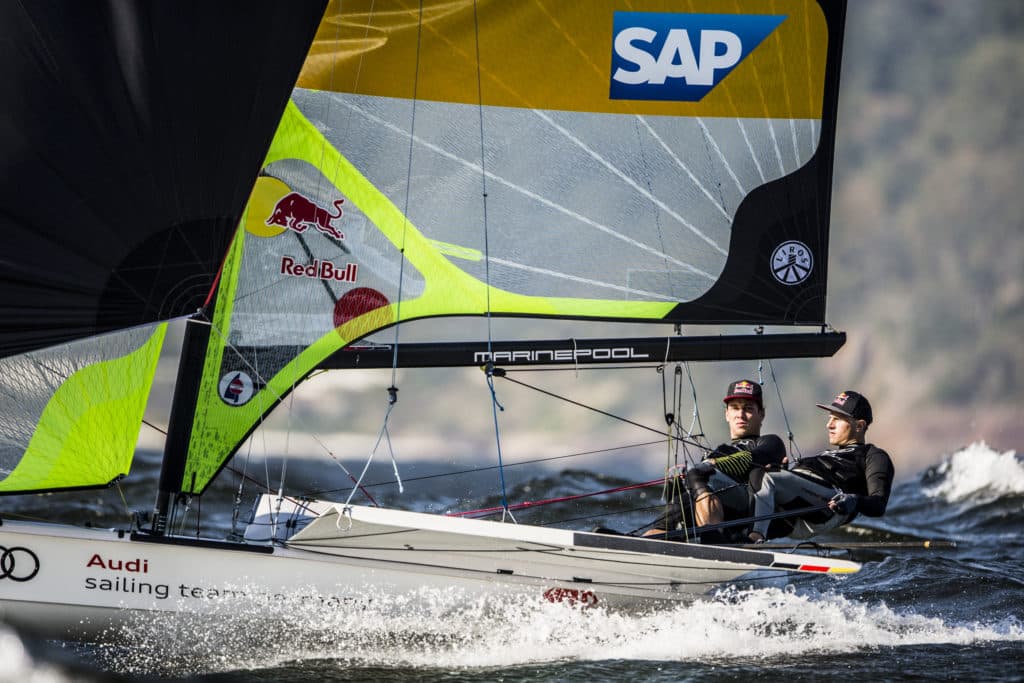
Olympic hopefuls sacrifice their bodies, minds, careers, and relationships with a sort of distorted tunnel vision, headed straight toward those illustrious five rings. They push themselves to physical extremes; mentally challenging themselves one race leg at a time; spend large and nonrefundable amounts of money in hopes their equipment will last long enough; and lets not forget, they are constantly getting soaking wet. It’s all the splashing that’s the greatest concern for sailors hoping to spend their summer sailing in Guanabara Bay, Brazil. The level of pollution in the water is a serious risk factor, as illustrated by German 49er sailor, Erik Heil, an Olympic hopeful turned poster-child for viral infection.
In late 2015, The Guardian published a story on Hiel, which also gave an in-depth look into Rio’s water quality issue. The article quoted an associate professor of public health at the University of Texas Health Science Center at Houston, Kristina Mena, who said, “We’re talking about an extreme environment, where the pollution is so high that exposure is imminent and the chance of infection very likely.”
Heil and his crew, Tomas Plossel, knew about the water quality concerns before the 2015 Aquece Rio test event. The pair was cautious, but since nothing had happened to them during any of their training sessions on Guanabara Bay, they kept their focus on competing, winning third overall. During the regatta, Heil noticed a scratch on his right calf wouldn’t heal properly.

Upon his return to Berlin, Heil saw doctors at the Institute of Tropical Medicine and International Health and was recommended for immediate surgery to remove the infection site. After a half hour of painful extraction, the small scratch had turned into a crater. “I had, literally, a hole in my leg,” says Heil.
After ten days of treatment, the bacteria had fully left Heil’s body. He was weak from intense rounds of antibiotics, but was determined to get back on the water. “We never thought about giving up our dream because we had invested so much time, sweat, effort and money in it,” says Heil. “Nothing can stop us.”
What Heil didn’t realize is the impact he would have on the sailing community, and the Olympic community as a whole. Once he made his experience public on his team blog, the media frenzy began. Numerous reports surfaced highlighting the water quality and ultimately pointing fingers of blame on both Olympic officials as well as government environmental groups. Heil openly admits to using his experience to highlight the issues. “It was my own decision to publish my health issue because I wanted to show how bad the water quality is,” he says. “The concerning bodies and associations should finally do something about it, to care about the safety of all the athletes that get in touch with the water in Guanabara Bay.”
His actions were not in anger toward the venue and its authorities, but merely a reality check for sailors and officials alike. “We’re not happy about all the press due to an illness,” says Hiel. “Each athlete prefers to talk about the sport and not health issues. But, sometimes you need an incident like this to wake them up.”

Heil’s experiences in Rio aren’t all flashes of antibiotics and hospital visits — he genuinely admires Rio’s Guanabara Bay. “Rio offers so much for sailors: The venue is very complex and challenging with the strong current and the shifting winds. It’s a dream to be able to sail here. We just hope that the water improves and that nobody becomes sick or something happens [at the Games].”
Heil and Plossel returned to Rio in December to train with other members of the German squad. To his dismay, he felt conditions were worse than what he had seen at the test event in August, but he did make mention this could have been due to the recent rain.
World Sailing knew Heil was admitted to the hospital after the Aquece Rio event, and released a detailed statement acknowledging the problematic water quality and a plan of action. The statement made by World Sailing at the time still rings true: “While work remains to be done, ISAF, Rio 2016 and all relevant local authorities are confident that the venue will be ready to host 380 sailors during the Olympic Sailing Competition in one year’s time.”
Heil returned to Rio in December to train with members of the German squad. To his dismay, he felt conditions were worse than what he had seen at the test event in August.
Today, World Sailing is looking at the bigger picture when it comes to Rio’s safety concerns. Since 2014 the water treatment figure has increased from 12 percent to over 50 percent, and still climbing. They’ve deemed yet another race area secure, totaling seven for the sailors to race upon, and are working in conjunction with four other watersports federations to build water quality models, a data-driven prediction tool that will be able to alert the organizations when the water quality will be at its poorest during the events. “Sailing is by far the most organized and on top of it when it comes to putting pressure on the IOC,” says Malcolm Page, World Sailing’s new Head of Marketing and Media.
Page is keeping a keen eye on progression amongst efforts to keep the sailors safe, and the racecourses fair. Since the test event and Heil’s incident, many have attacked World Sailing as being responsible for what hasn’t been done to ensure the sailors are safe. “People like to use us as a quick target, we keep doing our best, and highest priority at this point is keeping the teams informed,” says Page, noting that World Sailing’s head of Medical Commission, Nebojsa Nikolic, is on the ground ensuring the teams take an aggressive approach with proper precautions, such as proactively washing gear and being overly thorough with to personal hygiene.
The looming Olympic Games created an environmental crusade on the Brazilian coast. The local government has spent $20 million to install eco barriers to detain floating debris that flows from the city, eco-boats to collect floating remnants on water, and helicopters that use satellite imagery to pinpoint large debris pools for the boats to collect. The last piece to the puzzle, and one of the most important, is Marina de Gloria. World Sailing’s executive board will be taking a trip to the site in March to survey the area.
Rio has hosted many notable events before (Pan Am games, Star Worlds, Finn Worlds, etc.) and yet even with the water quality the way it is, the sailors keep coming back for more. The Olympic Games are the pinnacle of athletic competition, and their arena should be as well.









